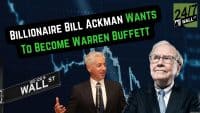
Now that the Uber Technologies Inc. (NYSE: UBER) and the Lyft Inc. (NASDAQ: LYFT) initial public offerings are in the books, as well as in the red, do these IPOs mark the end of the gig economy or just the end of the beginning? Uber closed down about 8% on its first day of trading Friday, and Lyft has dropped more than a third since its March IPO, including a 7% dip on Uber Friday.
Last Wednesday, just two days ahead of the Uber IPO, finance startup Social Finance, better known as SoFi, launched a new exchange-traded fund. The SoFi Gig Economy ETF (NASDAQ: GIGE) is an actively managed fund that “seeks long-term capital appreciation by providing exposure to companies involved in the revolutionary shift towards a ‘gig’ economy–a free-market system comprised of freelancers and shared resources, such as transport and real estate.”
The Gig Economy ETF holds 49 equities, with a top five, as of Monday morning, as follows:
- Square Inc. (NYSE: SQ), 4.02%
- PayPal Holdings Inc. (NASDAQ: PYPL), 3.95%
- eBay Inc. (NASDAQ: EBAY), 3.91%
- Twitter Inc. (NYSE: TWTR), 3.90%
- Etsy Inc. (NASDAQ: ETSY), 3.83%.
Lyft is sixth (3.6%) and Uber, which just debuted, is not yet included in the fund.
One could argue that the top five holdings address some aspect of working in the gig economy. Square and PayPal offer ways for gig workers to make and receive payment, while eBay and Etsy provide marketplace services for small (one-person?) businesses. Meanwhile, Twitter is a marketing tool for individual gig economy workers. In fact, similar relationships could be drawn to any of the other 44 companies among the fund’s holdings, including such giants as Apple, UPS, FedEx and Google.
Most of the companies associated with the gig economy are outfits like Uber and Lyft that depend on individuals willing to work for a fee and flexible hours in exchange for no job security and no benefits. According to Crunchbase, 438 startup delivery services have held 885 funding rounds and received total funding of $11 billion. Just two of those startups account for more than $2 billion in funding: DoorDash with $1.4 billion and Gett with $893 million. Uber raised nearly $25 billion in pre-IPO funding on its own, while Lyft struggled along on just $4.9 billion.
As long as gig workers like drivers are willing to work for an ever-shrinking piece of the revenue pie that the more-or-less pure-play gig firms like Uber and Lyft will offer, shareholders likely will do okay once the dust settles. When drivers/workers get fed up with being underpaid and begin deserting these firms, the Gig Economy ETF could still be a decent investment because it relies so little on pure-play gig firms and much more on firms that are no more than suppliers to the gig companies.
The Gig Economy ETF has a management fee of 0.59% and a net asset value of $19.36 as of Friday’s close. The fund has $2 million in assets under management and 100,000 shares outstanding, according to ETFb.com. As of mid-morning Monday, shares traded at $19.10, down about 2.7% for the day. It’s worth noting that the Dow Jones industrials were down about 2.2% and the Nasdaq Composite was more 3% lower at the same hour.
Thank you for reading! Have some feedback for us?
Contact the 24/7 Wall St. editorial team.

 24/7 Wall St.
24/7 Wall St.



